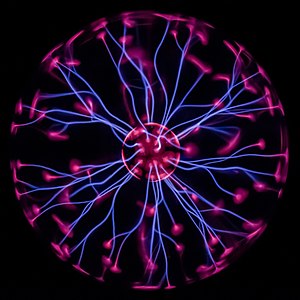
Back Elektromagnetisme Afrikaans Electromagnetismo AN विद्युत्चुम्बकत्व ANP كهرطيسية Arabic বিদ্যুত চুম্বকত্ব Assamese Electromagnetismu AST الکترومغناطیس AZB Lèstrik besi berani BEW Електромагнетизъм Bulgarian विद्युत्चुम्बकत्व Bihari

| Articles about |
| Electromagnetism |
|---|
 |
In physics, electromagnetism is an interaction that occurs between particles with electric charge via electromagnetic fields. The electromagnetic force is one of the four fundamental forces of nature. It is the dominant force in the interactions of atoms and molecules. Electromagnetism can be thought of as a combination of electrostatics and magnetism, which are distinct but closely intertwined phenomena. Electromagnetic forces occur between any two charged particles. Electric forces cause an attraction between particles with opposite charges and repulsion between particles with the same charge, while magnetism is an interaction that occurs between charged particles in relative motion. These two forces are described in terms of electromagnetic fields. Macroscopic charged objects are described in terms of Coulomb's law for electricity and Ampère's force law for magnetism; the Lorentz force describes microscopic charged particles.
The electromagnetic force is responsible for many of the chemical and physical phenomena observed in daily life. The electrostatic attraction between atomic nuclei and their electrons holds atoms together. Electric forces also allow different atoms to combine into molecules, including the macromolecules such as proteins that form the basis of life. Meanwhile, magnetic interactions between the spin and angular momentum magnetic moments of electrons also play a role in chemical reactivity; such relationships are studied in spin chemistry. Electromagnetism also plays several crucial roles in modern technology: electrical energy production, transformation and distribution; light, heat, and sound production and detection; fiber optic and wireless communication; sensors; computation; electrolysis; electroplating; and mechanical motors and actuators.
Electromagnetism has been studied since ancient times. Many ancient civilizations, including the Greeks and the Mayans, created wide-ranging theories to explain lightning, static electricity, and the attraction between magnetized pieces of iron ore. However, it was not until the late 18th century that scientists began to develop a mathematical basis for understanding the nature of electromagnetic interactions. In the 18th and 19th centuries, prominent scientists and mathematicians such as Coulomb, Gauss and Faraday developed namesake laws which helped to explain the formation and interaction of electromagnetic fields. This process culminated in the 1860s with the discovery of Maxwell's equations, a set of four partial differential equations which provide a complete description of classical electromagnetic fields. Maxwell's equations provided a sound mathematical basis for the relationships between electricity and magnetism that scientists had been exploring for centuries, and predicted the existence of self-sustaining electromagnetic waves. Maxwell postulated that such waves make up visible light, which was later shown to be true. Gamma-rays, x-rays, ultraviolet, visible, infrared radiation, microwaves and radio waves were all determined to be electromagnetic radiation differing only in their range of frequencies.
In the modern era, scientists continue to refine the theory of electromagnetism to account for the effects of modern physics, including quantum mechanics and relativity. The theoretical implications of electromagnetism, particularly the requirement that observations remain consistent when viewed from various moving frames of reference (relativistic electromagnetism) and the establishment of the speed of light based on properties of the medium of propagation (permeability and permittivity), helped inspire Einstein's theory of special relativity in 1905. Quantum electrodynamics (QED) modifies Maxwell's equations to be consistent with the quantized nature of matter. In QED, changes in the electromagnetic field are expressed in terms of discrete excitations, particles known as photons, the quanta of light.